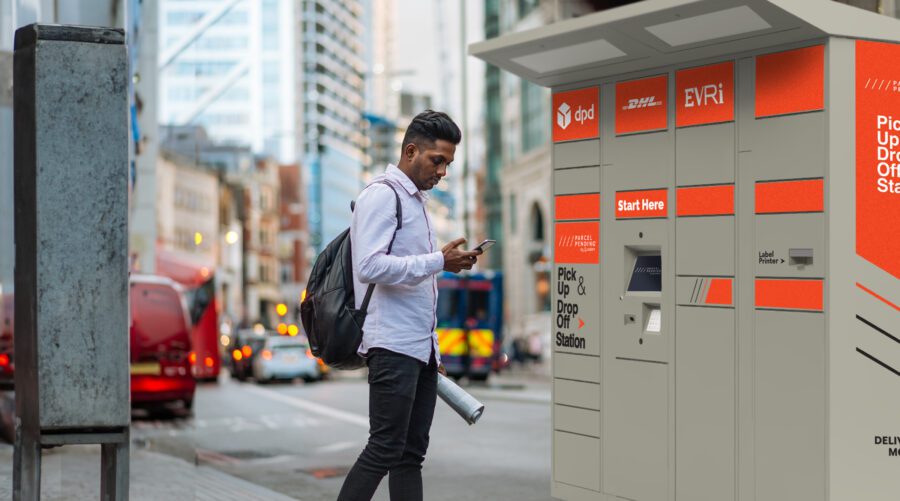
University
Gen Z Goes to College – How this Generation Will Change Student Housing
Written by: Parcel Pending
7 Min Read
Published: April 6, 2020
Updated: April 3, 2023
Each generation has a different worldview. And one of the biggest generational shifts between Baby Boomers, Generation Xers, Millennials, and Gen Z is technology. Remember 30 years ago when the idea of calling someone meant hoping both parties were near a landline at the same time? Not long before that, calling someone meant asking an operator to connect a call.
These worldviews, these lifestyle shifts, create generational philosophy changes that can shape the world in a more physical way.
One area that is likely to feel this change most acutely is universities. As Gen Z goes to college, their worldviews, values, and lifestyle choices will have a strong impact on every aspect of the university experience, especially student housing. What can higher educational institutions expect from Gen Z? Understanding this generation’s needs starts with knowing their values.
Gen Z Values
Most of the generational mindset shifts stem from different sets of core values. These values are largely shaped by a generation’s upbringing. For example, consider how Gen Z:
- Came of age during the Great Recession; they witnessed early on what the fallout of economic instability looks like
- Were quite young when 9/11 happened, and often don’t remember details about that day
- Were born after the fall of communism across the globe
- Have never known a world without theinternet, cell phones, and online shopping.
While these aren’t the only things that could shape their outlook, these events do stream through the generation’s collective subconscious. Deloitte drafted a list of values that Gen Zers were likely to adopt in the coming era. After thorough surveying, Deloitte released this list of Gen Z values:
- Developing career goals and entrepreneurial aspirations
- Independence in work, but not isolated
- Company’s products aren’t enough; their ethics and social impact matters
- Financial security is more important than spending on personal fulfillment
- Social media interactions have serious implications
- Diversity across multiple spectrums (beyond race and ethnicity)
Some of these values are probably already sparking ideas. So, to confirm the suspicions, here are 5 ways in which housing is expected to change.
#1 New Age Security
University is a time when children become young adults—when education and higher learning can invigorate the minds and souls and push eighteen-year-olds toward individualization. In that spirit, university is a sanctuary for this transformation. Thus, it’s no surprise that security is among a college’s primary goals.
Gen Zers are no stranger to local tragedies. In the wake of campus shootings, housing security stands among the forefront demands by this new generation. Diving into the particulars, students request:
- Student Walking Services – At night when college students need to cross campus, they can call upon their dorm’s or their school’s walking services to provide a security buddy.
- Keycard Access – To ensure that non-students and faculty can’t enter their homes at any point in the day, students request secured entrances to their housing (including keycard access).
- Well-lit Surroundings – To feel safe and secure in and around their housing, well-lit surroundings are a key facet for college students.
- 360 Security Cameras – Should anything happen, it’s comforting to know that the perpetrator was on video and that the local police can have more informative resources to catch them.
Package Security
Apart from being secure in their housing, Gen Z students have also been voicing concerns over package theft and package retrieval inefficiencies. One value that has intensified from Millennials to Gen Zers is how easy and convenient online shopping is. Which makes sense—Gen Zers haven’t experienced a world in which online shopping isn’t the norm. They don’t see online shopping and shopping as two different things.
What does that entail for student housing? Read on to learn more about student internet package issues.
Package overload. Campus mail centers that rely on manual sorting and delivering are being overrun by the increased number of packages coming through their doors. This has led to increased package theft when deliveries are left at the front of students’ doors, or to irritatingly slow service due to the overstuffed mailroom.
The Parcel Pending Solution
In an effort to combat these inefficiencies and package thefts, Parcel Pending utilizes the software and hardware available in today’s technologically-savvy era to create the most effective smart lockers for colleges. With their innovative technology, Parcel Pending helps student housing and can promote schools:
- Reduce Expenses – The average mail services operation on campus is expected to spend 240 hours per week sorting and processing deliveries. By integrating intelligent parcel locker systems, this would free up 240 hours of labor time per week. That’s the kind of math that adds up quickly.
- Decrease Package Delivery Time – Part of the “smart” locker solution involves the automatic notifying of students when one of their packages arrived. This allows less confusion, less waiting, and a positive consumer experience for the students.
- Customize to Their Needs – Each student body has different needs. Allowing the mail services administrators to specify everything from the quantity and size of the lockers to the color and exterior print, Parcel Pending Smart Lockers offer complete personalization and customizability to each campus.
Speaking of smart solutions…
#2 Tech-Forward Housing
Another definitive change to student housing surrounds the technology in and around the building—some of which have already been described:
- Smart Lockers
- Keycode / Keycard Access
- Security Technology
However, the student housing amenities don’t stop there. Universities are increasingly making their college campuses “fun” and “tech-forward” in order to attract college tuition fees (read: students). Forbes writes:
“For less selective schools, perhaps putting money into luxurious amenities- instead of academics-is the smarter business decision. The University of Iowa has an estimated $53 million campus recreation center, complete with an 18-foot diving well, bubble benches, and lazy river. Texas Tech University has a veritable water park in their backyard. California State University, Fullerton has a 30-foot rock wall. And California State University, Long Beach has a $70 million wellness center with hand scanners for secure entry.”
Whether it’s hand scanners for secure entry or smart technology to increase security and productivity, technological innovation is sure to play a primary role in changing the housing landscape.
#3 Affordable Housing Options
A common misconception about Gen Zers are their often-combined affectations with Millennials about money. While both groups tend to purchase more items online, Gen Zers seem to rebel against the Millennial attitude of “spend money on the now; spend money on the experiences.” In fact, Gen Zers are likely to be setting up a retirement savings account with their part-time job, as opposed to blowing three months’ paychecks on a weekend trip to Coachella.
This financially conservative attitude is reflecting on their decisions toward higher education. According to Business Insider:
Indeed, at least one in five Gen Z respondents in a 2017 study by the Center for Generational Kinetics said student debt should be avoided at all costs. That’s even reflected in young people’s feelings about higher education: “Generation Z is intentionally choosing to attend a less-expensive college so they can graduate with less debt,” Dorsey said to Mic by phone. “No or less debt means they can enter the job force with more mobility, allowing them to take a job they really want that may pay less, because a good amount of their salary won’t be going to a college fund.”
What a great opportunity for universities to appeal to the financially cautious side of Gen Zers by offering them choice—another key word here—in their housing payment plans. While bunking up with five other dormmates in a crowded room might not be the most ideal situation, if it saves money in the long run, Gen Zers will consider it.
#4 Environmental Underpinning
Often what runs along the same trends in college student housing with regards to technology is environmentally conscious decisions. Many Gen Zers believe in “going green” and reducing their carbon footprint. After all, they’ve been raised with two words ingrained in their developing minds: climate change.
In which case, some universities are now incorporating:
- Automated Lights
- Dorm Gardens
- Water-efficient Appliances (showers, sinks, toilets)
- Recycled Toilet Paper
- Solar Panels
Conscious Campus
One theme that underlies both the shift toward an environmentally conscious housing and the discussion between gendered, coed, and genderless bathrooms, is that Gen Zers want to support brands that champion a cause. This value system still applies when the “Gen Z” goes to college.
Thus, looking at things college students want, a conscious campus is inevitable.
How Student Housing Will Change As Gen Z Goes To College
These initial changes above are but the beginning of an altering student housing landscape for colleges and universities. As this generation blossoms into maturity, further seeds of their value systems and philosophical underpinnings will sprout new ways of providing comfort, security, and technology through their university’s housing.
If there’s one major takeaway to glean from these charged-up, socially conscious young minds—it’s that change is happening. Preparing for it now, early on, is key.
Sources:
- Forbes. The College Amenities Arms Race. https://www.forbes.com/sites/caranewlon/2014/07/31/the-college-amenities-arms-race/#768e12804883
- Business Insider. Research shows how Generation Z thinks differently from millennials when it comes to money. https://www.businessinsider.com/differences-between-generation-z-and-millennials-money-2017-6
- Deloitte. Welcome to Generation Z. https://www2.deloitte.com/content/dam/Deloitte/us/Documents/consumer-business/welcome-to-gen-z.pdf





